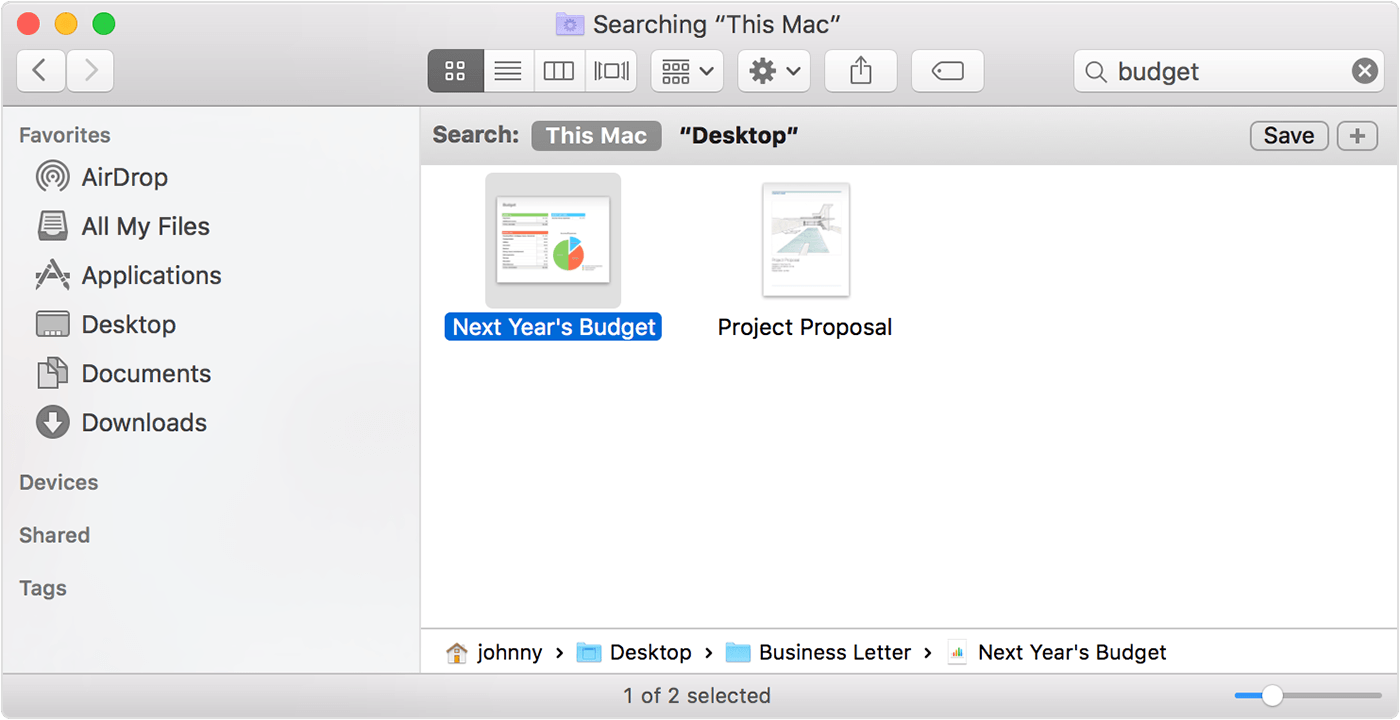How To Search For Files On Mac

How To Search For Multiple Files On Mac

Mac users who are searching for specific file type and file format matches on their computer can make the job dramatically easier by issuing proper search operators to the Find functions in Mac OS X. File type search operators can be used directly in Spotlight and also in the Finder based search. Mac installation files are named.dmg,.pkg, or.zip. If it’s a zip file, this will unpack the zip automatically into its own folder. If it’s not a zip file, skip to the next step. Once the zip file has been unpacked, navigate to that folder, where you will find a.dmg or.pkg file. Follow the instructions. Find and delete files. Click Apple menu About This Mac, click Storage at the top of the window, then click Manage. Click a category in the sidebar: Applications, iTunes, and iBooks: These categories list files individually. To delete an item, move the pointer over the file name, then click the Delete button. To search by file type, use the word “kind” and the file type. For example, type “kind:folders” or “kind:audio”. To show the location of a file on your Mac, choose the file from the results list, then press and hold Command. The file’s location appears at the bottom of the preview. To open the file’s location, press Command-R.
Although the Search box on your MacBook Finder toolbar is all you usually need to find most files and folders, sometimes you need a little more flexibility and power to locate what you need on your system. To do so, add the Find controls, which you can use to create custom searches with more complex criteria. To locate a file by using the Find controls, follow these steps:
How To Search For Hidden Files On Mac
With the Finder active, display the Find controls by pressing Command+F (or choose File from the Finder menu and then choose Find).
Mac OS X displays the controls that you see here.
Click the buttons at the top of the list to specify where you want to search.
You can choose This Mac (your entire system, including network volumes) or a local volume.
To search for a specific filename, click the first pop-up menu in the Search Criteria strip at the top of the window and choose Name; then type all or part of the filename in the Contains box.
Lion automatically begins searching as soon as you type at least one character.
After you locate the file or folder that you need, click the entry name to reveal the location of the matching file or folder in the path bar at the bottom of the window. You can also double-click it to launch (or display) it.
If you want to search for a text string within the document itself, click the first pop-up menu in a row, choose Contents, and then type the string to match in the box.
The text must appear just as you’ve typed it, so it’s always a good idea to restrict what you’re searching for to a minimum of words that you’re fairly sure will cause a match. (Content searching is not case sensitive, though.) Content searching works only when you’ve generated an index.
To include additional search criteria lines, click the button with the plus sign next to the last criterion line.
You can limit your results based on all sorts of rules, including the date that the file or folder was last modified, when it was created, the file type, the size, the extension, or whether the file or folder is marked visible or hidden (such as a system file).
You can also remove a search criterion line by clicking the button with the minus sign.
To save the search criteria that you selected, click Save.
This creates a Smart Folder, which (you’re gonna lovethis) Lion automatically updates (in real time) to contain whatever items match the criteria you’ve saved! You can specify the location for your Smart Folder, and you can choose to add it to your Finder Sidebar for the ultimate convenience. Sweet.
Bug fixes and performance improvement.System requirements: Manufacturer:Global Delight Technologies Pvt. Control the features of Boom 2 and certain other Mac media players using your iPhone or iPad.Screenshots:What′s new in Boom 2 v1.6.2 for Mac?. Boom for mac. Boom 2 welcomes the new Mac OS and is fully compatible with it.
When you’re done canvassing your computer, click the Back button in the Find dialog to return to the Finder.
